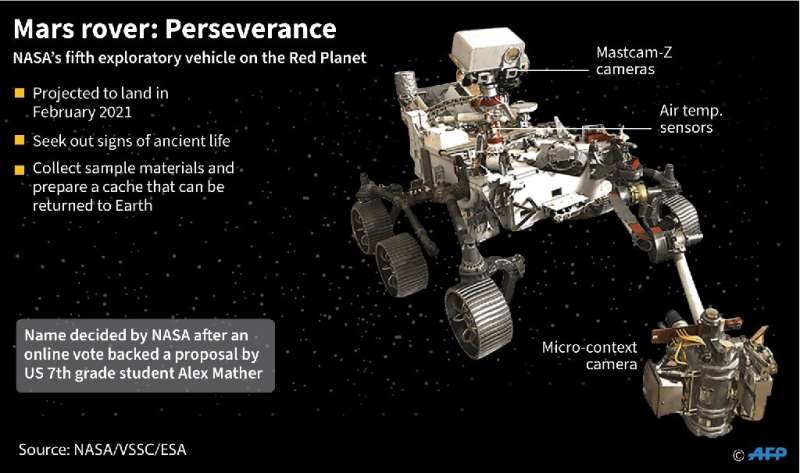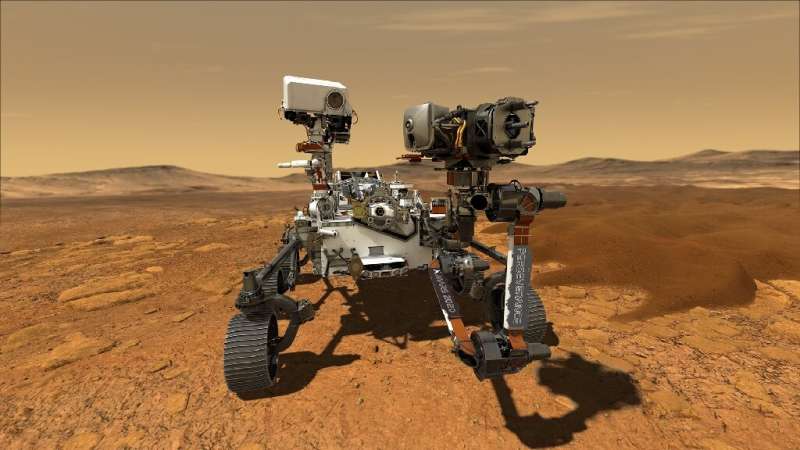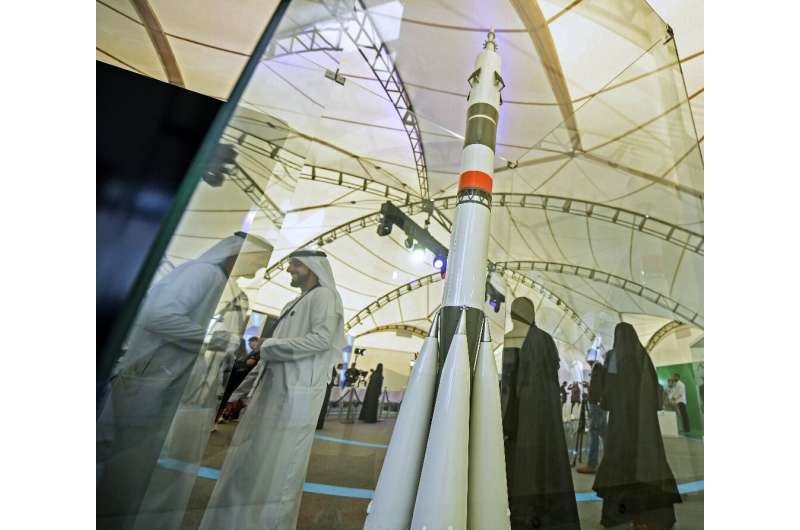A trio of Mars missions in the starting blocks

"We have lift-off, we have lift-off!"
The summer race to land a space probe on Mars is off to a hot start.
Three countries—The Hope Probe (United Arab Emirates), Tianwen-1 (China) and Mars 2020 (United States)—have all taken their positions, hoping to take advantage of the period of time when the Earth and Mars are nearest: a mere 55 million kilometres (34 million miles) apart.
The neighbouring planets only come this close once every 26 months—a narrow "launch window" based on their relative positions in space.
Space agencies from all three nations plan to send rovers to the Red Planet to look for additional signs of past life and potentially pave the way to—someday—step foot on its surface.
The journey will take about six months.
The UAE's Hope Probe—the first interplanetary mission by an Arab country—launches on July 15. China plans to send its inaugural Mars probe, a small remote-controlled rover, between July 20 and July 25.
By far the most ambitious project, the US Mars 2020, has a planned launch date of July 30.
The probe—called Perseverance—is expected to spend one Mars year (or about 687 Earth days) on the planet's surface collecting rock and soil samples that scientists hope will shed light on past life forms that may have inhabited the faraway planet.

The aim of subsequent missions will be to bring those samples back to Earth.
A fourth planned launch, the EU-Russian ExoMars, was postponed until 2022 due to the COVID-19 public health crisis.
Traces of life
Several dozen probes—most of them American—have set off for the Red Planet since the 1960s. Many never made it that far, or failed to land.
The drive to explore Mars flagged until the confirmation less than 10 years ago that water once flowed on its surface.
"It's the only planet where we've been able to detect past signs of life, and the more we learn about it more hope there is," Michel Viso, an astrobiologist at CNES, France's space agency, told AFP.
"It feels like something exciting is happening, and people want to be a part of it."
India and the European Union are also setting their sights on a Mars landing. In 2024, Japan plans to send a probe to explore the Martian moon Phobos.

As with the moon missions, different countries have invested heavily—in reputation and cash—on Mars exploration, with each looking to find their specific niche, Viso noted.
The holy grail, he added, is getting boots on the ground: "This represents the 'ultimate frontier' of space exploration."
So far, only the US has done detailed feasibility studies, and in a best-case scenario achieving that goal will take at least 20 years.
A swathe of Mars lander missions over the past five decades have met with varying degrees of success since the Soviet Mars 2 and 3 probes launched in 1971.
NASA's Curiosity lander, which arrived in 2012 and is designed to determine whether the planet's environment was ever able to support microbial life forms, remains operational on the surface—as does the Insight lander, which arrived in 2018.
Martian colonies
The UAE is thinking even longer term.
The oil-rich Gulf nation plan to establish a "science city" on Earth that will reproduce Mars' atmospheric conditions, with the goal of establishing a human colony on the Red Planet around 2117.

Supporting human life on Mars presents a number of logistical challenges.
Today's Mars is basically an immense, icy desert. About 3.5 billion years ago, it lost the dense atmospheric pressure that protected it from cosmic radiation.
Scientists are still trying to determine whether the planet was ever inhabited by metabolic life forms.
"Four billion years ago, the conditions on the planet's surface were very close to those which we had on Earth when life first appeared," including liquid water and a dense atmosphere, said Jorge Vago, the spokesperson for the European Space Agency's ExoMars initiative.
Taking up the mantle of its robot forebears, Perseverance will explore an entirely uncharted environment, the Jezero crater—a 28-mile wide area that is believed to have been the site of an ancient river delta.
It was chosen among 60 other potential landing sites, and may have sedimentary rocks that could include traces of past microbial life, liquid water and carbon.
Perseverance will collect around 40 of these samples, 30 of which will be brought back to Earth to be studied.
The results of the analysis—while not as far off as the UAE's proposed Mars colony—will nonetheless have to wait at least 10 years.
© 2020 AFP





















